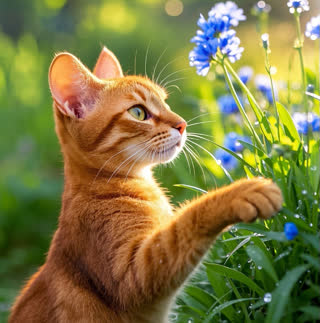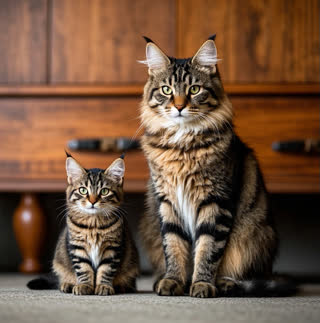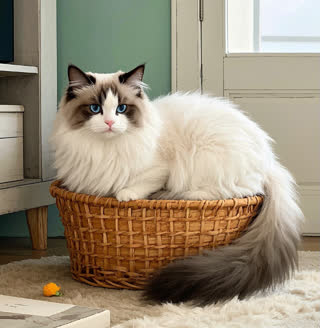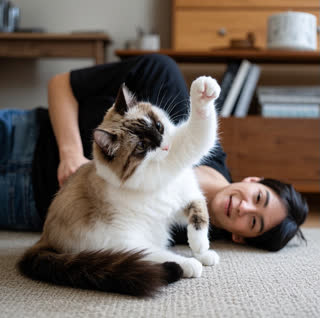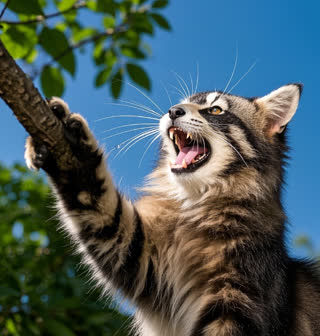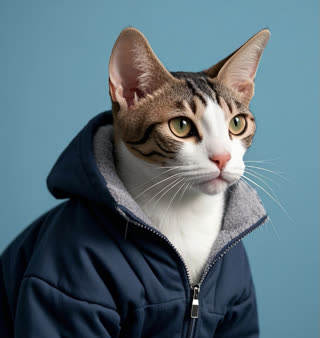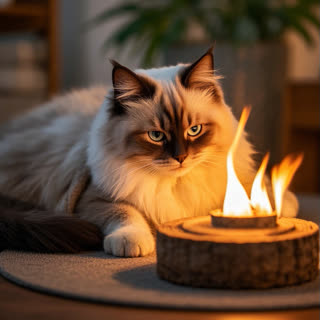When it comes to cat loyalty, the age-old question persists: How many owners can a cat remember? While cats are often celebrated for their independence, their capacity to form deep emotional bonds with humans is a testament to their surprising loyalty. In this article, we explore the science behind feline memory, their ability to recall past owners, and how they adapt to new relationships—all while uncovering the heartwarming ways cats show their devotion.
Contrary to popular belief, cats are far from emotionally detached creatures. While they may not display affection as overtly as dogs, their loyalty runs deep. Research suggests that cats form attachments to humans based on trust, routine, and positive experiences. These bonds are so strong that even after separation, cats often remember their former caregivers—especially if those relationships were marked by love, consistency, or trauma.
A cat’s memory is a complex blend of short-term and long-term recall. Studies indicate that cats can retain memories for months, if not years, depending on the significance of the event. For instance:
Positive associations: Cats remember routines, treats, and affectionate gestures. If an owner provided daily meals or playtime, those memories linger.
Negative experiences: Traumatic events, such as abuse or neglect, can leave lifelong imprints, causing cats to avoid similar situations or people.
Sensory cues: Cats rely heavily on scent, sound, and touch. A familiar voice or unique smell can trigger memories long after an owner has left.
In essence, a cat’s memory isn’t just about faces—it’s about the emotional and sensory connections they’ve formed.
Not all memories are created equal. Several factors determine how vividly a cat remembers an owner:
Duration of the relationship: Cats who lived with an owner for years are more likely to recall them than those in short-term placements.
Emotional intensity: High-impact moments, like a sudden separation or a traumatic event, are etched deeper into a cat’s mind.
Routine and dependency: Cats who relied on an owner for food, shelter, or companionship often retain those memories longer.
For example, a cat rehomed after years with a loving family might show signs of recognition if reunited, even if separated for months.
The answer is yes—but with caveats. Cats can remember past owners while forming new bonds, especially if their new environment is stable and nurturing. However, the emotional weight of each relationship varies. A cat may:
Prioritize familiar routines: They might seek out behaviors associated with a previous owner, like sleeping in a specific spot or responding to certain commands.
Adapt to new caregivers: With patience and positive reinforcement, cats can grow attached to new owners, though they may still show subtle signs of 怀念 (longing) for their past life.
It’s important to note that cats don’t view humans as “owners” in the traditional sense. Instead, they form hierarchical or affiliative bonds based on trust and mutual benefit.
Cats communicate memory through subtle behaviors. If your feline friend has lived with others before, watch for these clues:
Vocalization: Meowing or yowling in a familiar tone when reunited.
Body language: Purring, rubbing against legs, or seeking physical contact.
Routine-driven behavior: Returning to old hiding spots or expecting treats at specific times.
However, cats may also exhibit stress or avoidance if their past experiences were negative.
If you’ve adopted a cat with a history, fostering trust is key. Here’s how to ease the transition:
Consistency: Stick to a routine for feeding, play, and cuddling.
Patience: Give your cat time to explore and acclimate without pressure.
Positive reinforcement: Reward affectionate behavior with treats or praise.
Provide security: Create a safe space, like a cozy bed or quiet room, where your cat can retreat.
Over time, most cats adapt and form new bonds, though traces of their past may remain.
Research on cat intelligence and memory is ongoing, but studies suggest they possess cognitive abilities similar to toddlers. For example:
Object permanence: Cats understand that people or objects exist even when out of sight.
Associative learning: They link actions (e.g., opening a can) to outcomes (e.g., food).
Social recognition: Cats can distinguish between human voices and faces, though they may prioritize scent over sight.
This cognitive complexity explains why cats can remember multiple owners and environments, even if their loyalty isn’t always overtly expressed.
Q: Will my cat forget me if I leave for two weeks?
A: Unlikely. Cats rely on routine and sensory cues. If you provide a consistent environment, they’ll remember you—and may even greet you with extra affection upon your return.
Q: Do cats mourn the loss of an owner?
A: While it’s hard to quantify grief in animals, cats may exhibit changes in behavior (e.g., reduced activity, loss of appetite) after a significant absence or death. They may also seek out familiar scents or spaces.
Q: Can a cat have more than one favorite person?
A: Yes! Cats often bond with multiple family members, though they may show preference for one person based on who provides food, play, or comfort.
In the realm of cat loyalty, the question isn’t just how many owners can they remember—it’s about the profound connections they forge and carry throughout their lives. Cats may not express love in the same way humans do, but their loyalty is evident in their routines, their trust, and their quiet, unwavering presence. Whether they’re adapting to a new home or greeting an old friend, cats remind us that love, memory, and companionship transcend species.
So, the next time your cat curls up beside you, purring contentedly, remember: They chose you—and that choice is a testament to their remarkable capacity for loyalty.


